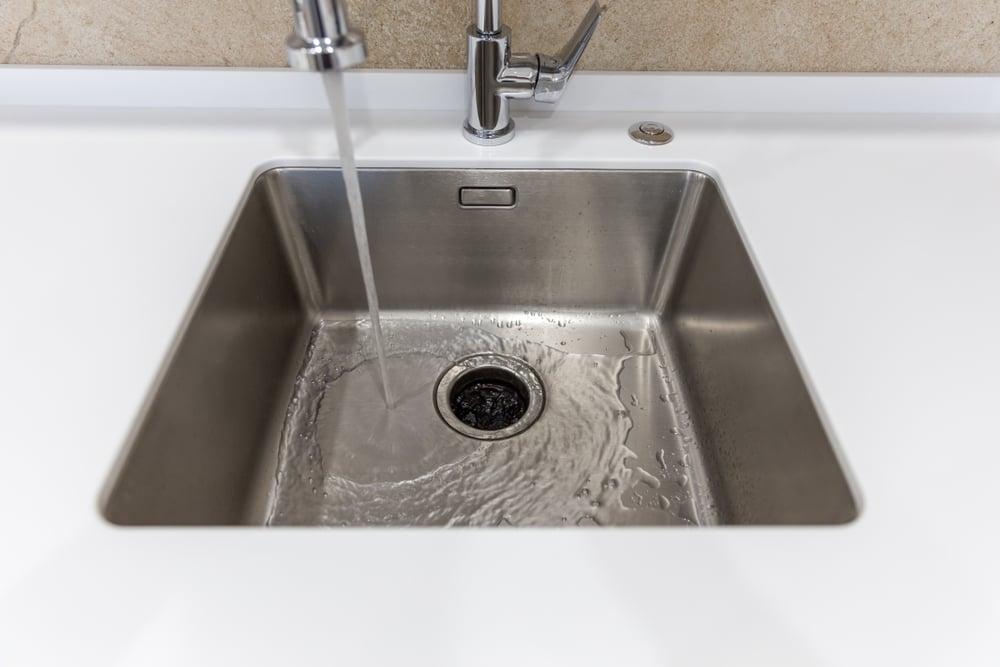An Definitive Guide to Fixing a Leaky Waste Disposal Unit
An Definitive Guide to Fixing a Leaky Waste Disposal Unit
Blog Article
What're your ideas with regards to Tips on Fixing a Leaking Garbage Disposal?

Waste disposal unit are crucial kitchen appliances that assist in taking care of food waste effectively. However, a leaking garbage disposal can be a frustrating and untidy problem to handle. Thankfully, many leaks can be repaired conveniently with a few simple actions. In this write-up, we will certainly review just how to repair a leaking waste disposal unit properly.
Introduction
Waste disposal unit are mounted under kitchen area sinks and are made to shred food waste into smaller sized items, enabling it to pass through the plumbing system quickly. While these tools are usually reputable, leaks can occur gradually as a result of damage, loosened connections, or damage to the device.
Typical Reasons For Leaks in Waste Disposals
Worn Seals and Gaskets
Seals and gaskets play a vital role in stopping water from dripping out of the waste disposal unit. Over time, these parts can weaken, causing leakages around the disposal system.
Loose Connections
The connections between the garbage disposal and the pipes system can come to be loose over time, causing water to leakage out throughout procedure.
Fractures or Holes in the Disposal Unit
Physical damage to the waste disposal unit, such as cracks or holes in the real estate, can likewise result in leakages.
Determining the Source of the Leakage
Before attempting to repair a dripping waste disposal unit, it is essential to identify the resource of the leakage. This can typically be done with visual examination or by conducting straightforward tests.
Visual Assessment
Examine the garbage disposal unit carefully for any kind of indications of water leak. Pay attention to areas around seals, gaskets, and link points.
Checking for Leaks
One way to evaluate for leakages is by running water via the disposal system and checking for any kind of noticeable signs of leak.
Tools and Products Needed for Dealing With a Leaking Waste Disposal Unit
Before starting the repair service procedure, gather the required devices and materials, including a screwdriver, flexible wrench, plumbing's putty, substitute seals or gaskets, and epoxy or patching material for fixing splits or holes.
Step-by-Step Overview to Taking Care Of a Dripping Garbage Disposal
Shut off the Power
Prior to trying any repair work, make sure that the power to the waste disposal unit unit is turned off to stop the danger of electric shock.
Locate the Leakage
Identify the precise location of the leak and identify the cause.
Tighten up Links
Utilize a wrench to tighten up any loosened links in between the disposal device and the plumbing system.
Replace Seals or Gaskets
If the leakage is because of worn seals or gaskets, get rid of the old components and replace them with new ones.
Patching Splits or Openings
For splits or holes in the disposal system, usage epoxy or an ideal patching product to seal the damaged area.
Evaluating the Waste Disposal Unit After Repair Service
Once the fixing is full, evaluate the garbage disposal by running water through it to make sure that the leakage has actually been fixed.
Preventive Maintenance Tips to Prevent Future Leaks
To prevent future leakages, it is vital to do normal upkeep on your garbage disposal. This includes maintaining it clean, preventing putting non-food products or tough things down the disposal, and regularly looking for leakages or other problems.
Conclusion
Finally, repairing a dripping waste disposal unit is a fairly straightforward procedure that can be finished with fundamental devices and products. By adhering to the steps outlined in this post and practicing precautionary upkeep, you can maintain your waste disposal unit in good working problem and avoid costly repair work in the future.
What to Do About a Leaking Garbage Disposal
A leaking garbage disposal often goes unnoticed until you confront a sopping cabinet, a foul-smelling puddle, or an audible drip-drip-drip from the unit. The fix can be frustrating, too, because the leak can stem from a number of components in the system. Fortunately, with a little sleuthing, you can zero in on the leak and—depending on the exact location—stop the icky oozing and repair the component that caused it. Worst case scenario, if it turns out that the garbage disposal must be replaced, installing a new one is a reasonable do-it-yourself task for those with basic plumbing skills. Read on to keep the cash you’d otherwise hand over to a pro.
Prepare to find the leak
Prior to testing the garbage disposal for leaks, unplug it at the wall outlet and turn off the power from the breaker box to prevent electrical shock. Then insert a watertight sink stopper into your sink drain and wipe the unit dry with a clean cloth. In any handy container, mix a few drops of food coloring into a few cups of water, and pour the dyed water onto the sink stopper to help you locate the leak.
Investigate the source
the top, where the disposal meets the sink drain the side, where the dishwasher hose or main drain pipe connects to the disposal or the bottom of the unit Inspect each of these locations while gliding a light-colored rag over the unit; the dyed water will readily show on the rag and reveal the location of the leak. If a leak isn’t immediately apparent, remove the sink stopper and pour a few more cups of dyed water down the sink drain, then check for leaks again. Leaks near the top of the unit are more likely to show themselves while the sink is plugged, while side and bottom leaks are more noticeable while the sink is unplugged.
The metal sink flange that sits directly inside the sink drain is typically sealed around the top with plumber’s putty (a clay-like sealant) and then secured from under the sink with bolts. If the plumber’s putty deteriorates, or the bolts loosen, the flange can no longer form a watertight seal between the sink drain and the disposal—which could cause a leak at the top of the unit.
To reseal the leaky flange, you must first detach the garbage disposal. Start by loosening the screws securing the main drain pipe to the disposal, then loosen the screws in the metal clamp securing the dishwasher hose to the disposal and detach the drain pipe and dishwasher hose from the disposal. Loosen the screws in the mounting ring that connects the disposal to the metal mounting assembly beneath the sink, then pull down the disposal and carefully set it on a clean, dry surface. Loosen the bolts in the mounting assembly with a wrench, then pull down the mounting assembly and set it near the disposal.

Hopefully you liked our article about Tips on Fixing a Leaking Garbage Disposal. Thanks so much for spending some time to read our blog. In case you appreciated our post kindly be sure to share it. I praise you for your time. Visit us again soon.
Contact Us Now Report this page